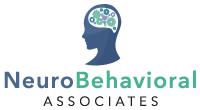As specialists in neurobehavioral health, we frequently encounter concerned parents asking about their child’s relationship with technology. The question, “is my child spending too much time on their phone?” has become increasingly common in our space — and for good reason. While technology offers incredible benefits for learning and connection, excessive use can pose significant mental health risks for developing minds.
Understanding the Modern Digital Landscape
Today’s children are growing up as true digital natives, with many receiving their first smartphone before entering middle school. Unlike previous generations who gradually adapted to new technologies, these young people have never known a world without instant connectivity, social media, and on-demand entertainment. This shift in how children interact with the world around them has created new challenges for parents, educators, and mental health professionals alike.
The allure of smartphones and digital devices is particularly strong for children and adolescents due to their developing brain chemistry. The dopamine-driven reward system that makes technology so engaging is the same system that’s still maturing in young people, making them especially vulnerable to the addictive qualities of digital life.
Recognizing the Warning Signs
Recognizing when your child has become addicted to technology to the point of impacting daily life is crucial, but can be tricky to spot. Some key warning signs include:
Sleep Disruption: Children who use devices late into the evening often experience poor sleep quality and difficulty waking up. The blue light emitted by screens can interfere with natural circadian rhythms, making it harder for young brains to wind down for restorative sleep.
Social Withdrawal: While technology can facilitate connections, excessive use often leads to decreased face-to-face interactions with family and friends. Children may prefer virtual relationships over real-world social experiences, limiting their development of crucial interpersonal skills.
Academic Decline: Constant notifications and the temptation to check devices can severely impact concentration and academic performance. Many children struggle to focus on homework or classroom activities when their devices are nearby.
Emotional Regulation Difficulties: Children who spend excessive time on devices may experience increased irritability, anxiety, or mood swings, particularly when access to technology is restricted.
Physical Symptoms: Headaches, eye strain, neck pain, and decreased physical activity are common physical manifestations of technology overuse.
The Mental Health Connection
The relationship between excessive screen time and mental health challenges in children is complex. Some of the most common issues include:
Anxiety and Depression: Children who spend significant time on social media platforms are often exposed to unrealistic comparisons with others, cyberbullying, and a constant pressure to maintain an online presence. This can contribute to feelings of inadequacy, social anxiety, and depressive symptoms.
Attention Difficulties: The rapid-fire nature of digital content can make it challenging for children to develop sustained attention skills. Many parents report that their children seem unable to focus on single tasks for extended periods, a skill that’s crucial for academic success and personal development.
Sleep-Related Issues: Poor sleep quality directly impacts mental health, emotional regulation, and cognitive function. Children who use devices before bedtime often experience difficulty falling asleep and may wake up feeling unrefreshed.
Special Considerations for Neurodiverse Children
For children with neurobehavioral differences such as ADHD, autism spectrum disorder, or anxiety disorders, technology overuse can present unique challenges. These children may be particularly drawn to the controllable nature of digital environments, making it even more difficult to establish healthy boundaries.
Children with ADHD may find the instant gratification of technology especially appealing, as it provides immediate dopamine rewards that their brains crave. However, this can exacerbate attention difficulties and make it even harder to engage with less stimulating but important activities like homework or chores.
For children on the autism spectrum, technology can serve as both a valuable tool for communication and learning, and a potential area of fixation. While digital devices can help these children connect with others and explore their interests, excessive use may limit their engagement with the broader world and important developmental experiences.
Creating Healthy Digital Boundaries
Establishing appropriate technology limits requires a balanced approach that considers your child’s individual needs, developmental stage, and family values. Here are some strategies we recommend to families:
Start with Family Media Agreements: Work together to create clear expectations about when, where, and how technology will be used in your home. This collaborative approach helps children understand the reasoning behind limits and gives them ownership in the process.
Implement Tech-Free Zones and Times: Designate specific areas of your home (such as bedrooms or the dinner table) and times (such as the hour before bedtime) as technology-free spaces. This helps ensure that important activities like sleep, family time, and homework aren’t interrupted by digital distractions.
Model Healthy Usage: Children learn more from what they observe than what they’re told. Demonstrating balanced technology use in your own life sends a powerful message about healthy digital habits.
Encourage Alternative Activities: Help your child discover engaging offline activities that provide the same sense of accomplishment and enjoyment they get from their devices. This might include sports, art projects, reading, or spending time in nature.
When to Seek Professional Help
While many families can successfully establish healthy technology boundaries on their own, some situations may require professional intervention. Consider reaching out for support if:
- Your child becomes extremely distressed or aggressive when technology access is limited
- Academic performance continues to decline despite implementing boundaries
- Your child shows signs of depression, anxiety, or other mental health concerns
- Family relationships are significantly strained due to technology conflicts
- Your child seems unable to engage in offline activities or maintain real-world friendships
Moving Forward Together
The goal isn’t to eliminate technology from your child’s life entirely, but rather to help them develop a healthy, balanced relationship with digital devices. Let’s be honest, technology isn’t going anywhere! Plus, it can be a powerful tool for learning, creativity, and connection when used appropriately. By establishing clear boundaries, maintaining open communication, and modeling healthy habits, families can harness the benefits of technology while protecting their children’s mental health and overall well-being.
Remember that every child is unique, and what works for one family may not work for another. Be patient with the process and willing to adjust your approach as your child grows and their needs change.
Contact NeuroBehavioral Associates
If you’re concerned about your child’s technology use or its impact on their mental health, the team at NeuroBehavioral Associates is here to help. Our specialists can provide comprehensive evaluations and personalized strategies to support your family’s digital wellness journey. Contact us today to learn more about our services and how we can help your child develop healthy technology habits that support their overall well-being.






